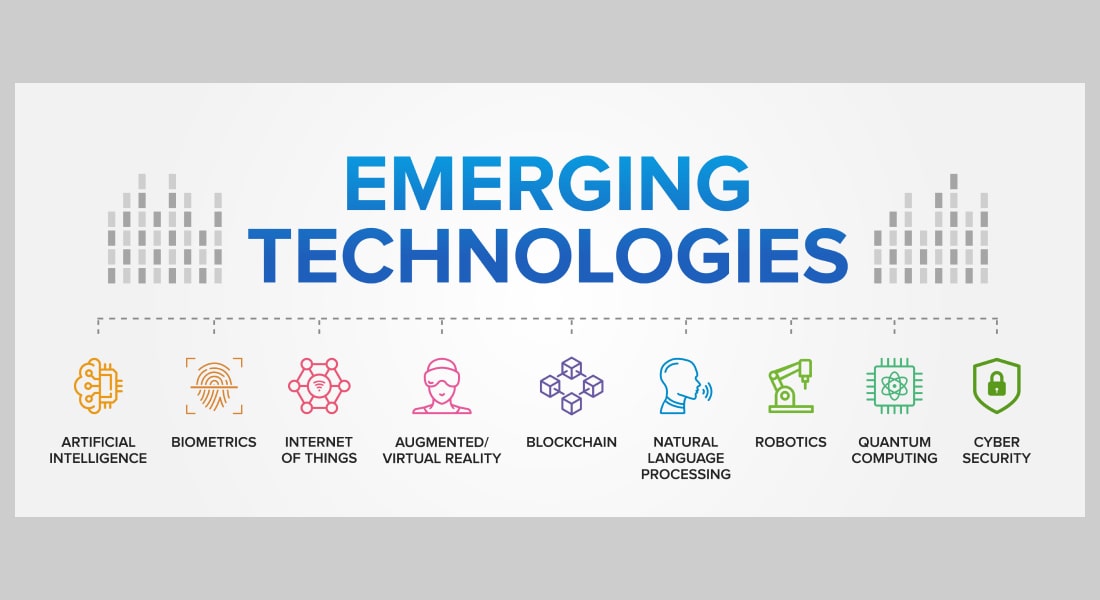How Emerging Technology Training Ensures Future-Proofing for Corporates

The business world moves at an astonishing speed. The technologies we embrace today might be outdated in a few short years. Amidst this whirlwind of change, one thing is certain: businesses that want to stay ahead of the curve must embrace a mindset of "future-proofing." Future-proofing, quite simply, means preparing your organization to adapt and thrive in the face of unpredictable developments. One vital aspect of future-proofing is ensuring your workforce is well-versed in emerging technologies that hold the power to revolutionize industries.
Want to Future Proof Your Workforce? Make Sure you Stay Updated with Emerging Technology!
Here are a few really popular ones -
- Artificial Intelligence and Machine Learning
- Cloud Computing
- Internet of Things
- Blockchain
- Extended Reality
Emerging Technologies: Shapers of the Future
When we talk about emerging technologies, what exactly comes to mind? Here are some prominent examples that are rapidly transforming workplaces:
1. Artificial Intelligence (AI) and Machine Learning (ML)
AI and ML are arguably the most disruptive forces in the modern landscape. From automating mundane tasks to analyzing vast amounts of data to provide hyper-personalized customer experiences, their applications stretch across virtually every sector.
2. Cloud Computing
Cloud-based solutions offer flexibility, scalability, and cost-effectiveness, making them increasingly dominant models for data storage and software as a service (SaaS).
→ Download eBook Now: Online Learning Services
3. Internet of Things (IoT)
Networked devices, sensors, and smart appliances are generating unprecedented amounts of data, enabling businesses to gain real-time insights into operations, customer behavior, and market trends.
4. Blockchain
This distributed ledger technology promises enhanced security, transparency, and efficiency in processes ranging from supply chain management to financial transactions.
5. Extended Reality (XR)
Encompassing virtual reality (VR), augmented reality (AR), and mixed reality (MR), this suite of technologies allows users to interact with digital content and simulations in immersive ways, with far-reaching applications in corporate training, product development, and customer service.
Why Emerging Technology Training is an Investment, Not an Expenditure
It's tempting to view training on new technologies as a costly endeavor or even an unnecessary luxury. However, failing to cultivate a tech-savvy workforce will lead to much higher costs in the long run. Consider these compelling benefits of investing in emerging technology training:
- Increased Efficiency and Productivity: Emerging technologies frequently streamline processes, automate tasks, and empower employees to make faster, more informed decisions. A workforce trained to understand these tools will work smarter, not harder.
- Enhanced Innovation: Technological literacy fosters a culture of exploration and experimentation. Empowered employees are more likely to spot problems to solve with a novel technological approach, giving your company a competitive edge.
- Boosted Competitiveness: The marketplace doesn't wait for slow adopters. Businesses that successfully leverage new technologies gain a significant advantage in terms of speed, agility, and the ability to deliver cutting-edge products and services.
- Improved Customer Experience: Many emerging technologies have direct applications in making customer interactions smoother and more personalized. AI-powered chatbots, VR product demonstrations, and data-driven insights create a strong customer focus.
- Attracting and Retaining Top Talent: Today's top talent wants to work for companies at the forefront of technological innovation. Offering opportunities for upskilling and reskilling in emerging technologies is a powerful way to draw in ambitious candidates and keep your current workforce engaged.
Training Formats for Maximizing Success
Choosing the right format is crucial to the success of emerging technology training. Here are a few effective approaches:
- Blended Learning: A hybrid of online and in-person learning experiences offers flexibility. Self-paced eLearning modules give employees the basics, while in-person workshops provide opportunities for hands-on experimentation and collaboration.
- Gamification: Make learning engaging! Gamified training programs incorporate elements of competition and rewards, increasing motivation and knowledge retention.
- Microlearning: Instead of lengthy sessions, break down the training into easily digestible, focused modules. Microlearning is ideal for busy employees seeking on-demand learning that fits seamlessly into their schedules.

- Virtual and Augmented Reality (VR/AR): For certain technologies like XR, the best way to learn is by doing. Immersive VR/AR simulations provide safe, realistic environments for employees to practice skills and explore technology applications.
- Mentorship Programs: Pair experienced employees with those new to a particular technology. Mentors can offer personalized guidance and support, ensuring a smooth learning curve.
Addressing Challenges in Implementing Technology Training
- Fear of Change: Some employees may be resistant to learning new technologies due to a general fear of change or a belief that their skills will become obsolete. Address this by emphasizing the benefits of training in terms of career growth and job security. Highlight success stories of those who embraced learning and thrived as a result.
- Limited Time and Resources: Carving out time for training, especially for frontline staff, can be a challenge. Microlearning, on-demand resources, and training that ties directly into day-to-day job responsibilities can make it feel less like a burden.
- Identifying the Right Technologies: With so many emerging technologies on the horizon, how do you decide where to focus your training efforts? Start with a careful assessment of your industry, your core business goals, and the technologies most likely to create a strong competitive advantage for your specific company.
- Measuring ROI: How do you prove training was worth the investment? Define clear metrics before the training starts, such as increased efficiency metrics, customer satisfaction scores, innovation pipeline metrics, or employee retention rates.

A Look Ahead: The Future-Proofed Workplace
Imagine a future workplace where:
➢ AI algorithms seamlessly automate routine tasks, freeing up employees to focus on high-level strategic work.
➢ Cloud-based systems facilitate borderless collaboration, enabling teams to work together in real-time regardless of location.
➢ IoT sensors provide managers with real-time insights into operations, allowing for optimizations on the fly.
➢ Blockchain creates a secure, shared ledger for supply chains, improving traceability and reducing risks of fraud.
➢ Immersive XR experiences revolutionize employee training, customer service, and product development.
This futuristic picture isn't as farfetched as it may seem. With proactive emerging technology training, businesses can bridge the gap between where they are now and where they need to be to succeed in a rapidly changing world. Investing in the technological capabilities of your workforce is no longer a "nice-to-have," it's a business imperative. As a bonus, here’s a free eBook to help you understand how online learning services can help you stay updated with all the technologies emerging in this new era of training.





